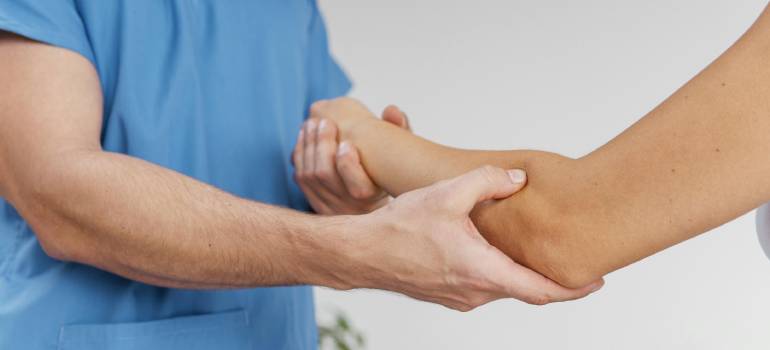Introduction
WMSD is a common term for injuries or disorders caused by repetitive movements at the workplace. They affect workers of all ages and professions and can cause pain and disability.
The risk of developing WMSD increases with age, especially after 40 years old. In addition, WMSD is often associated with other health conditions such as obesity, diabetes, cardiovascular diseases, arthritis, cancer, depression, anxiety, etc.
There are several risk factors associated with WMSDs. These include age, gender, job type, body size, psychosocial stressors, and previous injury history. Movements involving the arm and hands, such as bending, straightening, gripping, holding, twisting, clenching, and reaching, can cause WMSDs. These typical movements don’t pose a significant threat to the regular activity of daily life. The constant repetition of the actions, which are often done forcefully, and most importantly, the speed of the actions and the lack of recuperation time between them make those actions dangerous in professional environments.
Body positions that are fixed or limited.
Repetitions in movements.
Force is centred on the wrist or hand, which are minor body parts.
A work pace that does not provide enough time for rest in between movements
How can they affect me at work?
Work-related musculoskeletal disorders (WMSDs) are injuries or illnesses caused by repetitive motions that involve muscles, tendons, ligaments, nerves, bones, joints, and other tissues. They are common problems in the workplace and are often associated with prolonged sitting.
What are the symptoms of WMSD?
Apart from the pain being the common symptom, the other symptoms are:
Stiffness in joints
Tightness in muscles
Redness and swelling in the affected area
Numbness
There are three stages where WMSD pain can become from mild to extreme:
Stage 1. The affected limb feels fatigued and painful during the workday but feels better at night and on days off. No decline in work performance.
Stage 2. Pain and fatigue will begin early in the workday and persist till evening. Patients experience a reduced ability to perform work.
Stage 3. A feeling of pain, exhaustion and weakness when at rest. Unable to sleep or complete simple tasks.
How is WMSD recognised?
ENMG Test- Electroneuromyography constitutes two areas: electromyography (EMG) and nerve conduction velocity (NMV)
Magnetic Resonance Imaging (MRI)- enhances the accuracy of the diagnostic information by providing images of tendons, ligaments, and muscles.
What is the treatment for WMSD?
Limitations on mobility
Exercise.
Medications and operations.
Limitations on mobility: The first treatment for WMSD is to limit the work activities of the patient. In other cases, the patient is advised to switch to a different job.
Exercise: Patients suffering from WMSD are advised to perform the exercises after consulting with their physiotherapist. If not done correctly, it can aggravate the pain.
Medications and Operations: Primarily, anti-inflammatory drugs are prescribed to the patients to reduce the pain. When other approaches fail, doctors can further recommend advanced treatments or surgeries.
The most effective way to prevent WMSDs is through proper ergonomic equipment design and safety practices.
Conclusion
The early you recognise the symptoms, the earlier you can be diagnosed. Visit Orhtocure Clinic, the Best orthopaedic clinic in gurgaon , and get personalised expert treatment for bone health-related consultation and treatment. Visit Now!





